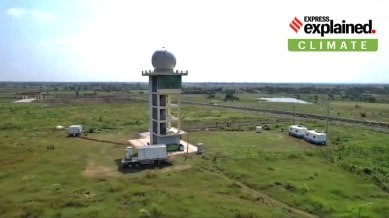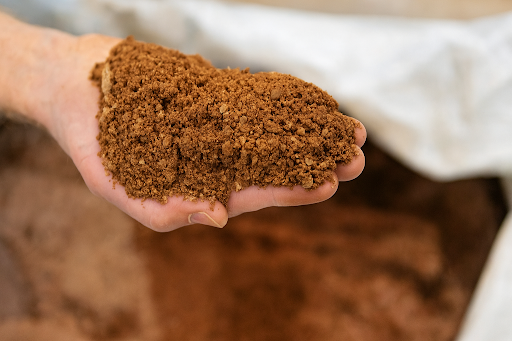Description

Disclaimer: Copyright infringement not intended.
Context
Recently the first phase of India’s Atmospheric Research Testbed in Central India (ART-CI) was inaugurated at Silkheda in Sehore district, located about 50 km northwest of Bhopal in Madhya Pradesh.
Details
Atmospheric Research Testbed (ART)
- The ART is an open-field, focused observational and analytical research programme at Silkheda.
- The facility aims to conduct ground-based observations of weather parameters like temperature, wind speeds, etc. and in-situ (on-site) observations of the transient synoptic systems – like low-pressure areas and depressions that form in the Bay of Bengal – during the southwest monsoon season from June to September.
- Studying these systems and their associated cloud parameters will be used to generate high volumes of data over a long period.
- It can then be compared with the existing weather models so that improvements can be made to obtain accurate rainfall predictions.
- The setup at ART will also be used for calibrating and validating various satellite-based observations, part of weather predictions and forecasting.
Development of ART
- Spread over 100 acres, the ART has been developed by the Ministry of Earth Sciences for Rs 125 crore.
- The Indian Institute of Tropical Meteorology (IITM),Pune, is in charge of the operations.
- Under the first phase, remote sensing-based and in-situ measurements using 25 meteorological instruments have commenced.
- In the second phase, ART will deploy instruments such as a radar wind profiler and balloon-bound radiosonde, and soil moisture and temperature measuring equipment.

Importance of Atmospheric Research Testbed
- At present, 45% of India’s labour force is employed in the agriculture sector.
- Much of Indian agriculture is rain-fed, as is cultivation along the Monsoon Core Zone (MCZ), which spans the central India region from Gujarat to West Bengal.
- The southwest monsoon season accounts for 70 per cent of the country’s annual average rainfall (880mm).
- Throughout India, the majority of Kharif cultivation is undertaken between July and August, which see an average monthly rainfall of 280.4mm and 254.9mm (1971–2020 average), respectively.
- During this four-month-long season, several rain-bearing synoptic systems, namely the low pressures or depressions, develop in the Bay of Bengal.
- Inherently, these systems move westwards/northwestwards over to the Indian mainland and pass through the MCZ, causing bountiful rainfall.
Important to have data about monsoons over central India
- The India Meteorological Department (IMD) issues rainfall forecasts for the country’s four homogeneous regions – north, west, east and south peninsular India. In addition, it issues a special rainfall forecast for the MCZ, which is considered India’s food bowl.
- However, there is still limited understanding about the role of these synoptic systems, their associated cloud physics, cloud properties and their overall role in enhancing the monsoon rainfall.
- Central India, therefore, acts as a natural laboratory for scientists and meteorologists to perform a hands-on study of the Indian monsoons.
- They can record data and make observations about the allied systems, clouds, and other associated physical and atmospheric parameters.
- Additionally, climate change is driving erratic rainfall patterns in the tropical regions, like India. It has also strengthened the low-pressure systems, which are aided by high temperatures. This results in very heavy rainfall recorded along their trajectory during the monsoons.
- Now, with ART, scientists will be able to generate and obtain long-term observations on cloud microphysics, precipitation, convection, and land-surface properties, among a host of other parameters.
- This information will be assimilated and fed into the numerical weather models to enhance forecast output, especially the rainfall forecasts. More accurate forecasts will ultimately help the farming community plan their activities better.
Why Madhya Pradesh?
- The ART has been established at Silkheda, a location that falls directly in line with the path of major rain-bearing synoptic systems.
- This will facilitate direct monitoring and tracking.
- Besides, the locality is pristine and free of anthropogenic and other pollutants, making it the best site in central India for setting up sensitive, high-end meteorological instruments and observatories for recording data.

Instruments are ART equipped with
- To obtain continuous observations of convection, clouds, and precipitation, and monitor the major modes of variabilities, the ART is equipped with over two dozen high-end instruments, radars and more.
- At 72 metres, ART will house India’s tallest meteorological tower.
- Some of the instruments deployed are an aethalometer for performing aerosol studies, a cloud condensation nuclei counter, a laser ceilometer to measure cloud sizes, a micro rain radar to calculate raindrop size and its distribution, and a Ka-band cloud radar and a C-band doppler weather radar to help track the movement of rain-bearing systems over this zone.
|
PRACTICE QUESTIONS
Consider these statements with reference to monsoon in India.
- In the southwest monsoon season, the wind blows from the mainland to the Bay of Bengal.
- In the season of retreating monsoon the wind blows from the mainland to the Bay of Bengal
- The southern parts of India receive rainfall in the season of retreating monsoon.
How many of the statements given above is/are correct?
- Only one
- Only two
- All three
- None
Answer B
|












